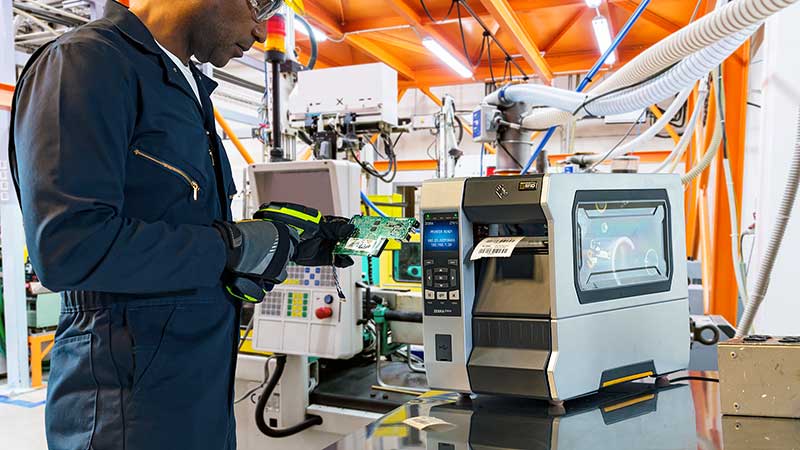When you consider enterprise IoT, information security, and the potential for data breaches in warehouse operations, your first concerns are most likely your network, computers, and mobile devices. Those are indeed well-known targets for hackers, but there are other security risks hiding in plain sight throughout virtually every warehouse: Your printers.
We tend to think of printers as simple one-way appliances, but we’ve been relying on them as fully networked multi-function technology hubs for decades, and today they are just as embedded in our warehouse networks as any PC. Unfortunately, the outmoded view of the printer-as-appliance persists in many IT departments and staffers often don’t follow even routine security protocols to protect them.
Cyberthreats that target PC operating systems and mobile phones may get most of the publicity, but any device that’s connected to your network has the potential to be exploited by an attacker. Today’s warehouse printers are susceptible to a range of threats:
- Using the printer to launch an attack. Just like a compromised laptop, an unsecure printer can be used to compromise other networked devices or applications, execute malicious code, or attack other systems or networks via a denial-of-service attack.
- Cloud printing risks. Jobs that print via the cloud are exposed to public infrastructure. If not properly secured, the cloud printing channel can open vulnerabilities that can be exploited by someone trying to break into your enterprise network.
- Unauthorized reconfiguration. Unsecured printers can be accessed by unauthorized users, allowing them to change configuration settings to intentionally or unintentionally disrupt your critical workflows.
- Data breach. Intruders may be able to intercept print jobs, exposing sensitive information to theft or misuse. There’s also a possibility data can be stolen from the printer memory, file system, or attached hard drives when printers are taken out of service.
- Output corruption and manipulation. Hackers or other unauthorized users who access your printers could hijack print jobs to modify or replace content, interfering with your operational workflows and undermining your customer shipments.
- Unauthorized physical access to print jobs. A lack of controls within the print queue can expose sensitive or important printer output to inappropriate audiences on premises.
The process of protecting your warehouse printers is basically the same as protecting PCs, phones, and other devices. The first step is to recognize that any connected printer is a potential vulnerability. From there, take the basic steps to secure each printer by following good security practices, including updating printer operating systems to patch vulnerabilities, changing passwords regularly, turning on authentication, enabling two-factor authentication, and removing unused applications.
It also helps to start with printers that are engineered for enhanced security. Zebra’s industrial printers feature Print DNA, the genetic code that transforms printers with business-driven capabilities, including embedded security features and tools that deliver critical protection to your infrastructure. If your legacy printers are not architected to protect against today’s security threats, upgrading to Zebra printers will enhance your security and boost your productivity.
Contact MSM today to learn more about the ways Zebra printers can improve the security of your warehouse printing operations.


